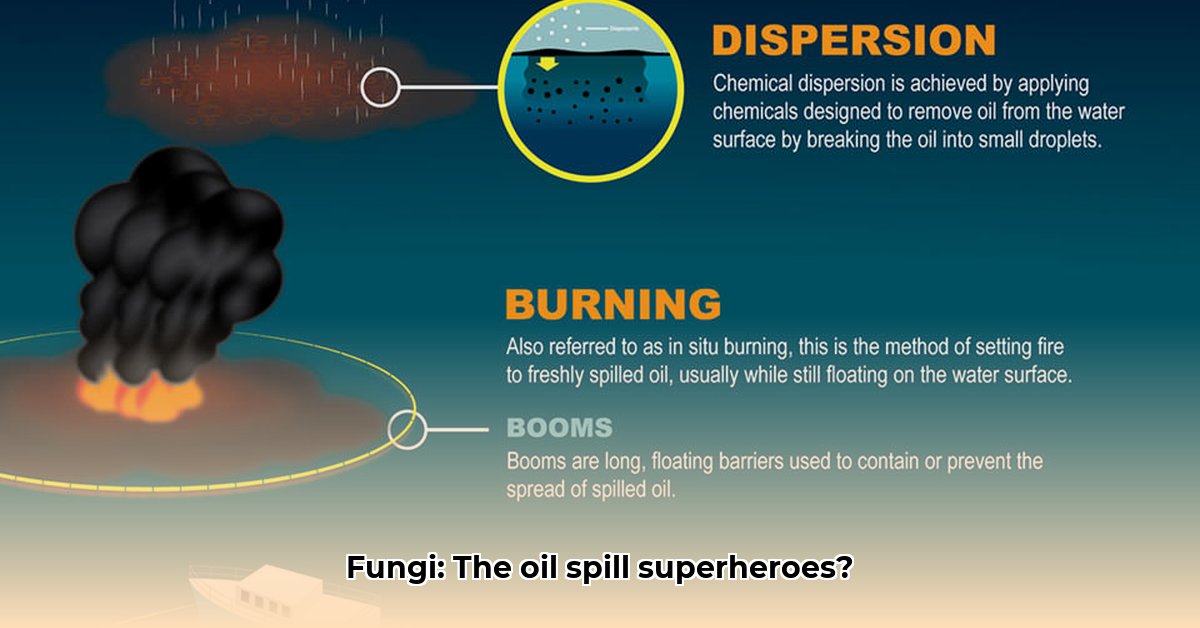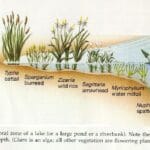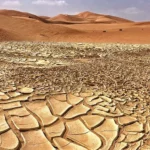Are you searching for an environmentally friendly and sustainable solution to tackle oil spills and pollution? Mycoremediation, which uses the remarkable ability of fungi to break down pollutants, might be the answer. This process utilizes natural organisms to restore soil, water, and overall ecosystem health. Learn more about the interconnectedness of fungi in this fascinating article.
Revolutionizing Environmental Cleanup with Fungi
Mycoremediation represents a revolutionary approach to environmental cleanup, harnessing the natural power of fungi to combat pollution. As a rapidly evolving field, it offers exciting potential for restoring ecological balance and enhancing biodiversity.
The Science Behind Fungi: How Mycoremediation Works
Fungi, as nature’s ultimate recyclers, form a distinct kingdom of life underpinned by vast networks of mycelium that act as biological sponges, absorbing pollutants from soil and water. These networks effectively transform complex harmful substances into simpler, less toxic compounds.
Certain fungi, such as the oyster mushroom (Pleurotus ostreatus) and white-rot fungi, excel in this process. They secrete powerful enzymes that break down complex pollutants like hydrocarbons from oil spills, pesticides, and heavy metals. This enzyme secretion offers an efficient, environmentally friendly, and biological solution that often surpasses traditional chemical approaches.
Real-World Applications of Mycoremediation
Mycoremediation is actively being applied across the globe, demonstrating its effectiveness in diverse situations.
-
Oil Spill Remediation: Following oil spills, fungi have been deployed to significantly reduce pollutant levels in affected soils and waterways. For example, the Amazon Mycorenewal Project has been using mycoremediation in highly polluted areas of the Ecuadorian rainforest.
-
Heavy Metal Removal: Researchers are increasingly exploring mycoremediation for soils contaminated with heavy metals, with promising results in laboratory and field trials.
-
Pesticide Breakdown: Fungi are being used to degrade pesticides and other harmful chemicals in agricultural soils, contributing to safer food production and healthier ecosystems.
One study demonstrated a significant reduction in petroleum hydrocarbon levels in contaminated soil following treatment with specific fungal strains. Similar successes have been observed in breaking down pesticides and other harmful chemicals, highlighting the versatility of mycoremediation.
Navigating the Challenges and Opportunities in Mycoremediation
Despite its vast potential, mycoremediation faces several challenges that need to be addressed for broader application.
-
Scalability: Scaling up from lab experiments to large-scale field applications requires further research and development to optimize processes and ensure consistent results.
-
Species Selection: Identifying the most effective fungal species for specific pollutants and environmental conditions is crucial for maximizing the efficiency of mycoremediation projects.
-
Cost-Effectiveness: Making mycoremediation cost-competitive with traditional remediation methods is essential for its widespread adoption by industries and governments.
Researchers are actively refining techniques and exploring new fungal species to overcome these challenges. They are also focusing on developing standardized protocols to ensure reliable and consistent application of mycoremediation across various settings.
A Sustainable Hope: The Future of Mycoremediation
The outlook for mycoremediation is overwhelmingly positive, driven by its potential to offer sustainable and cost-effective solutions for environmental cleanup. Continued research and development are expected to lead to more efficient and effective methods. Increased funding and collaboration between research institutions and industries are crucial for enabling the large-scale implementation of this promising technology.
Some scientists believe that mycoremediation could eventually become a standard practice for environmental cleanup, offering a sustainable and nature-based approach to addressing pollution challenges.
Actionable Steps: How You Can Take Action
There are several ways you can support the development and use of mycoremediation:
- Support Research and Development: Donate to organizations that conduct mycoremediation research.
- Advocate for Sustainable Policies: Contact your elected officials. Encourage legislation and policies that promote the use of sustainable remediation methods and reduce reliance on traditional approaches.
- Educate Yourself and Others: Learn more about mycoremediation through books, articles, and online resources. Share your knowledge with friends, family, and your community to raise awareness and promote its adoption.
- Support Environmentally Conscious Businesses: Patronize businesses committed to sustainable practices and environmental responsibility.
Fungal technologies have achieved up to a 92% success rate in certain remediation initiatives, demonstrating the significant potential of this nature-based solution.
Mycoremediation: A Sustainable Solution for a Cleaner Future
Mycoremediation offers a promising nature-based solution to environmental pollution, promoting environmental awareness and stewardship. This technology represents a significant step forward in our efforts to clean up our planet and create a more sustainable future.
How to Choose the Best Fungus Species for Mycoremediation Projects
Key Takeaways:
- Mycoremediation offers a sustainable approach, enhancing soil health and fertility, by utilizing fungi to break down pollutants.
- Successful mycoremediation depends on choosing the right fungus to ensure effective pollutant degradation.
- Selecting fungal species requires careful consideration of several factors including pollutant type and environmental conditions.
Optimizing Fungal Selection with Mycoremediation Processes
Mycoremediation’s effectiveness relies on its network of microscopic threads, quietly breaking down pollutants. Fungi possess the enzymatic power to digest contaminants, transforming harmful substances into less toxic byproducts offering a sustainable alternative to traditional, often harsh, remediation methods.
Selecting the right species for the specific pollutant and environmental conditions is crucial. White-rot fungi, for example, are known for their ability to break down complex hydrocarbons.
Factors Influencing Fungal Species Selection for Mycoremediation
Several critical factors determine which fungal species is best suited for a particular mycoremediation project.
- Pollutant Type: Different fungi excel at degrading different pollutants. For instance, white-rot fungi break down complex hydrocarbons (like those found in oil spills) using their lignin-degrading enzymes. Other species target heavy metals or pesticides, highlighting the importance of correct species selection.
- Environmental Conditions: Fungi thrive under specific conditions, including pH, temperature, moisture levels, and nutrient availability. Understanding these conditions is essential for selecting a species that will flourish at the site.
- Native vs. Non-Native Species: Using native fungi is generally preferred as they are better adapted to the local environment, reducing the risk of unintended ecological consequences and promoting biodiversity.
- Synergistic Effects: Effective mycoremediation projects often involve fungal and bacterial activity, with some bacteria enhancing fungal degradation. Considering these synergistic relationships can improve the overall success of the project.
A Step-by-Step Guide to Species Selection for Effective Mycoremediation
Successful mycoremediation requires careful planning.
- Site Assessment: Characterize the contaminated site by identifying the type and concentration of pollutants, along with environmental parameters such as pH and temperature.
- Species Selection: Based on the site assessment, select fungal species known to be effective against the specific pollutants and adapted to the environmental conditions.
- Laboratory Testing: Conduct laboratory-scale experiments to confirm the selected species’ effectiveness in degrading the target pollutant under simulated site conditions.
- Pilot Studies: Before large-scale deployment, conduct small-scale pilot studies at the contaminated site to validate the laboratory findings and adjust the approach as needed.
- Monitoring and Evaluation: Continuously monitor the mycoremediation process, assessing the rate of pollutant degradation and the overall impact on the environment.
Pros and Cons of Mycoremediation
| Pros | Cons |
|---|---|
| Environmentally friendly and sustainable | Scalability limitations for large-scale applications |
| Cost-effective in many situations | Lack of standardized methodologies and regulatory frameworks |
| Effective at degrading a wide range of pollutants | Potential for unintended ecological consequences (if non-native species used) |
| Promising long-term solution | Need for further research to optimize processes and understand long-term impacts |
The Future of Mycoremediation Technologies
Mycoremediation is a rapidly evolving field, and ongoing research is focused on developing scalable methods, understanding synergistic microbial communities, and expanding the range of pollutants that can be treated by this natural approach. These efforts promise to result in more sustainable and efficient environmental cleanup solutions.
Mycoremediation Applications in Post-Wildfire Soil Restoration
Key Takeaways:
- Mycoremediation harnesses fungi to clean polluted soil, offering a sustainable alternative to traditional methods.
- This approach is promising for restoring soil damaged by wildfires, which leave behind toxic ash and disrupt soil structure.
- While effective, challenges remain regarding scalability and standardization. Ongoing research is crucial.
Leveraging Fungal Power with Post-Wildfire Restoration
Mycoremediation utilizes nature’s cleanup crew, fungi, and their vast, interconnected networks of mycelium to break down complex pollutants and transform toxic substances into less harmful components.
Wildfires leave behind environmental damage, and mycoremediation offers a natural solution. Studies estimate that proper mycoremediation techniques can improve soil recovery rates by up to 40% after wildfires.
The Mechanics Behind Mycoremediation
Mycelium thrives in diverse environments, and its enzymatic power allows it to digest hydrocarbons, heavy metals, and pesticides. This reduces soil toxicity and improves its structure, fostering healthy ecosystems.
Implementing Mycoremediation in Post-Wildfire Scenarios
After a wildfire, mycoremediation offers a potent tool for restoration. Fungi, such as Pleurotus ostreatus (oyster mushrooms), are effective at breaking down hydrocarbons and other toxins in wildfire ash, cleaning the soil, improving overall health and fertility, and assisting in revegetation.
The introduction of specific fungal species is carefully considered and ideally, the species used are native to the region to ensure environmental consciousness and support for the existing ecosystem.
Addressing Challenges and Charting Future Directions
Despite its promise, mycoremediation isn’t a one-size-fits-all solution, and challenges exist. Optimizing fungal species selection for various pollutants and soil types remains vital. Scaling up operations and establishing standardized protocols are essential.
The Importance of Collaboration in Advancing Mycoremediation
Collaboration between researchers, government agencies, landowners, and private companies is required for successful implementation of mycoremediation. Funding is crucial to support research and development and collaboration ensures a coordinated, efficient approach to bringing this innovative technology to areas in need of restoration.
Mycoremediation brings the fungi to waste disposal and ecosystem restoration
Mycoremediation Techniques for Heavy Metal Contamination in Agricultural Soils
Key Takeaways:
- Mycoremediation offers a cost-effective approach to cleaning up heavy metal pollution in agricultural soils.
- Fungi can break down or immobilize heavy metals, rendering them less harmful.
- Successful mycoremediation relies on choosing the right fungal species for the pollutant and soil conditions.
Unveiling the Potential of Mycoremediation
Mycoremediation harnesses the natural abilities of fungi, specifically their mycelium, to clean up environmental contamination. It’s a greener, potentially more cost-effective alternative to traditional methods that promotes sustainable agriculture.
Heavy metals, which are persistent pollutants threatening agricultural land, are a prime target for mycoremediation. Fungal treatment can reduce heavy metal uptake in plants by up to 60%.
How Fungi Combat Heavy Metal Pollution
Specific fungal species possess enzymes that can degrade or bind heavy metals. Efficiency depends heavily on the type of fungus, the specific heavy metal, soil pH, moisture levels, and the presence of other microorganisms.
Real-World Applications and Difficulties of Mycoremediation
Several successful case studies demonstrate the promise of mycoremediation, with impressive results achieved in laboratory and small-scale field trials. Scaling up to larger agricultural areas presents challenges, and factors such as fungal growth rates, nutrient requirements, and the cost-effectiveness of large-scale implementation need further investigation.
One critical issue is the potential for fungal biomass to become a secondary source of contamination if not carefully managed after remediation, and not all fungal species are equally effective at degrading all types of heavy metal pollutants.
The Future of Mycoremediation in Agriculture
The future of mycoremediation is bright, but it requires a multi-pronged approach and long-term investments. Further research into fungal strains, improved application techniques, and long-term ecological assessments are critical. Collaboration among researchers, farmers, and governmental agencies will accelerate the development and adoption of these sustainable soil remediation techniques.
















